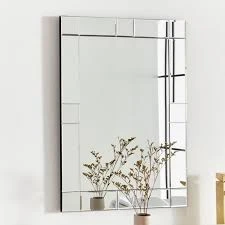

The Allure of Brown Reflective Glass
In the realm of architectural design and modern construction, materials play a pivotal role in not only the aesthetic appeal of a structure but also its functionality. Among these materials, brown reflective glass has gained significant attention and admiration in recent years. This unique type of glass marries beauty with practicality, making it an ideal choice for a variety of applications, from residential buildings to skyscrapers.
Brown reflective glass, characterized by its rich, warm hue and reflective quality, is often chosen for both its visual appeal and its ability to enhance energy efficiency. The reflective nature of the glass serves a dual purpose it not only contributes to the building's external beauty by creating an elegant facade but also helps to control the amount of incoming solar heat and glare. This makes brown reflective glass an excellent choice for regions with intense sunlight, as it can reduce reliance on air conditioning and, in turn, lower energy costs.
One of the most remarkable aspects of brown reflective glass is its versatility. It fits seamlessly into a variety of architectural styles, from contemporary and modern to more traditional designs. Its earthy tone complements natural surroundings beautifully, allowing structures to blend harmoniously with their environment. Moreover, when paired with materials such as wood, stone, or metal, brown reflective glass can create stunning visual contrasts that elevate a building's design.

In high-rise buildings, the use of brown reflective glass can enhance the overall aesthetic while simultaneously providing functional benefits. The glass can give a building a sleek, polished look, which is particularly attractive in urban settings. Additionally, its reflective properties help to minimize the impact of harsh sunlight, thereby improving the comfort of occupants inside the building. It also contributes to privacy, as the reflective surface makes it more challenging for people to see inside while still allowing natural light to filter through.
The environmental benefits of brown reflective glass add to its appeal. In an age where sustainability is a priority, using materials that contribute to energy efficiency is essential. Brown reflective glass can help to reduce a building's carbon footprint by lowering energy consumption, making it a responsible choice for environmentally conscious developers and homeowners alike. Furthermore, many manufacturers are committed to sustainable practices, ensuring that the production of brown reflective glass minimizes environmental impacts.
Maintenance is another important aspect to consider when evaluating materials for construction. Brown reflective glass is reasonably easy to care for, requiring only regular cleaning to maintain its appearance and performance. Its durability means that it can withstand various weather conditions, making it suitable for a range of climates.
In conclusion, brown reflective glass has solidified its place as a sought-after material in contemporary architecture. Its ability to combine aesthetic elegance with practical benefits, such as energy efficiency and durability, makes it an appealing choice for builders and designers. As we continue to prioritize sustainability and innovative design, the use of brown reflective glass is poised to grow even further, shaping the skylines and landscapes of the future. Whether used in residential homes or towering skyscrapers, this glass is not just a choice; it is a statement about the direction of modern design, reflecting beauty, functionality, and environmental awareness in every facet.